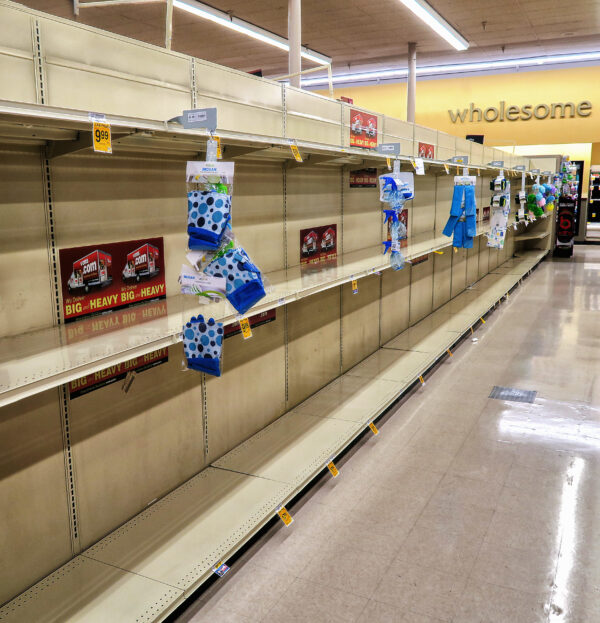There’s an image that’s stuck with many of us from the early pandemic: dozens of cargo ships anchored off the coasts of US ports, stacked high with hundreds of thousands of containers filled with goods, just sitting there in a traffic jam. At the same time, grocery store shelves sat empty of essentials like flour, bread and milk. There were also big delays for online orders on everything from furniture and bicycles and car parts, to PPE and medical supplies.

Before the pandemic, you rarely heard people use the phrase “global supply chain” – the incredibly complex network of corporations, factories, and transportation companies we depend on to make and move goods around the world. We just ordered our stuff that was often made on the other side of the planet, and it came right to our front doors, sometimes within hours. The system seemed to be humming along smoothly in the background.
But New York Times global economics correspondent Peter Goodman says that for decades, corporate leaders ignored glaring signs that the global supply chain was one crisis away from a system-wide meltdown.
And then Covid hit. “It was the moment where it was just inescapable,” Peter explains, “that we are dependent upon these jury rigged supply chains with inadequate supervision, without enough regulation such that there are now some gaping vulnerabilities.”
 In his new book “How the World Ran Out of Everything: Inside The Global Supply Chain,” Peter describes how long-standing problems – like corporate greed, overseas manufacturing, and our appetite for cheap stuff – are what made the system buckle in 2021. He also looks closely at every link in the supply chain for clues as to how the system can be fixed.
In his new book “How the World Ran Out of Everything: Inside The Global Supply Chain,” Peter describes how long-standing problems – like corporate greed, overseas manufacturing, and our appetite for cheap stuff – are what made the system buckle in 2021. He also looks closely at every link in the supply chain for clues as to how the system can be fixed.







